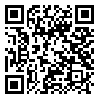Volume 17, Issue 1 (3-2023)
payavard 2023, 17(1): 15-23 |
Back to browse issues page
Ethics code: IR.MAZUMS.REC.1395.2222
Download citation:
BibTeX | RIS | EndNote | Medlars | ProCite | Reference Manager | RefWorks
Send citation to:



BibTeX | RIS | EndNote | Medlars | ProCite | Reference Manager | RefWorks
Send citation to:
Saadat Mehr R, Karimian A, Abdi K, Bakhshian F, Zarghami M. Comparison of the Effectiveness of Progressive Relaxation and Abdominal Breathing Technique on Pain Anxiety of Burning Deressing. payavard 2023; 17 (1) :15-23
URL: http://payavard.tums.ac.ir/article-1-7237-en.html
URL: http://payavard.tums.ac.ir/article-1-7237-en.html
1- Ph.D. in Nursing, School of Nursing and Midwifery, Mazandaran University of Medical Sciences, Sari, Iran
2- Ph.D. Candidate in Nursing, Faculty of Medical Sciences, Tarbiat Modaress of University, Tehran, Iran
3- Instructor, Department of Nursing, Faculty of Medicine, Komar University of Sciences and Technology, Sulaymaniya, Iraq
4- Ph.D in Psychology, Faculty of Social Science, Razi University, Kermanshah, Iran
5- Professor, Department of Psychiatry, Psychiatry and Behavioral Sciences Research Center, Addiction Institute, School of Medicine, Mazandaran University of Medical Sciences, Sari, Iran ,Mzarghami@mazums.ac.ir
2- Ph.D. Candidate in Nursing, Faculty of Medical Sciences, Tarbiat Modaress of University, Tehran, Iran
3- Instructor, Department of Nursing, Faculty of Medicine, Komar University of Sciences and Technology, Sulaymaniya, Iraq
4- Ph.D in Psychology, Faculty of Social Science, Razi University, Kermanshah, Iran
5- Professor, Department of Psychiatry, Psychiatry and Behavioral Sciences Research Center, Addiction Institute, School of Medicine, Mazandaran University of Medical Sciences, Sari, Iran ,
Abstract: (1081 Views)
Background and Aim: Burned patients experience a high level of anxiety during dress changing. The use of complementary medicine is one of the methods of anxiety management that many studies have conducted about it in recent years. The purpose of this study was to compare the effectiveness of progressive relaxation with abdominal respiration technique on pain anxiety of burn dressing.
Materials and Methods: This study was a randomized clinical trial with a control group. We selected forty-five patients referred to Zare Hospital in Sari through simple sampling and assigned into three groups. The first group received relaxation intervention, the second group received respiratory technique intervention, and no intervention was performed in the control group. Burn Specific Pain Anxiety Scale (BSPAS) was used to measure pain-related anxiety. SPSS software version 20 was used to analyze the data. Descriptive statistics, ANOVA and Tukey’s post hoc test were used for data analysis.
Results: Based on the results, 28% of the participants in the study were single and 72% were married. In terms of age, most of the participants were between 31 and 40 years old. The findings showed that there was no significant difference between the mean pain anxiety levels in the three groups before the intervention. There was a significant difference in the average burn dressing pain anxiety after the intervention between the relaxation group and the control group (P<0.001) and the breathing techniques group and the control group (P<0.000), so that the average burn dressing pain anxiety in the group Relaxation was reduced by 8.60 units as compared to the control group and in the breathing techniques group by 11.60 units as compared to the control group.
Conclusions: The use of relaxation “techniques” and respiratory techniques, which are non-pharmacological methods, are recommended during dress changing in the burned patient. These methods are simple and inexpensive and can reduce the effects of pain anxiety during dress changing.
Materials and Methods: This study was a randomized clinical trial with a control group. We selected forty-five patients referred to Zare Hospital in Sari through simple sampling and assigned into three groups. The first group received relaxation intervention, the second group received respiratory technique intervention, and no intervention was performed in the control group. Burn Specific Pain Anxiety Scale (BSPAS) was used to measure pain-related anxiety. SPSS software version 20 was used to analyze the data. Descriptive statistics, ANOVA and Tukey’s post hoc test were used for data analysis.
Results: Based on the results, 28% of the participants in the study were single and 72% were married. In terms of age, most of the participants were between 31 and 40 years old. The findings showed that there was no significant difference between the mean pain anxiety levels in the three groups before the intervention. There was a significant difference in the average burn dressing pain anxiety after the intervention between the relaxation group and the control group (P<0.001) and the breathing techniques group and the control group (P<0.000), so that the average burn dressing pain anxiety in the group Relaxation was reduced by 8.60 units as compared to the control group and in the breathing techniques group by 11.60 units as compared to the control group.
Conclusions: The use of relaxation “techniques” and respiratory techniques, which are non-pharmacological methods, are recommended during dress changing in the burned patient. These methods are simple and inexpensive and can reduce the effects of pain anxiety during dress changing.
Send email to the article author
| Rights and permissions | |
 |
This work is licensed under a Creative Commons Attribution-NonCommercial 4.0 International License. |





